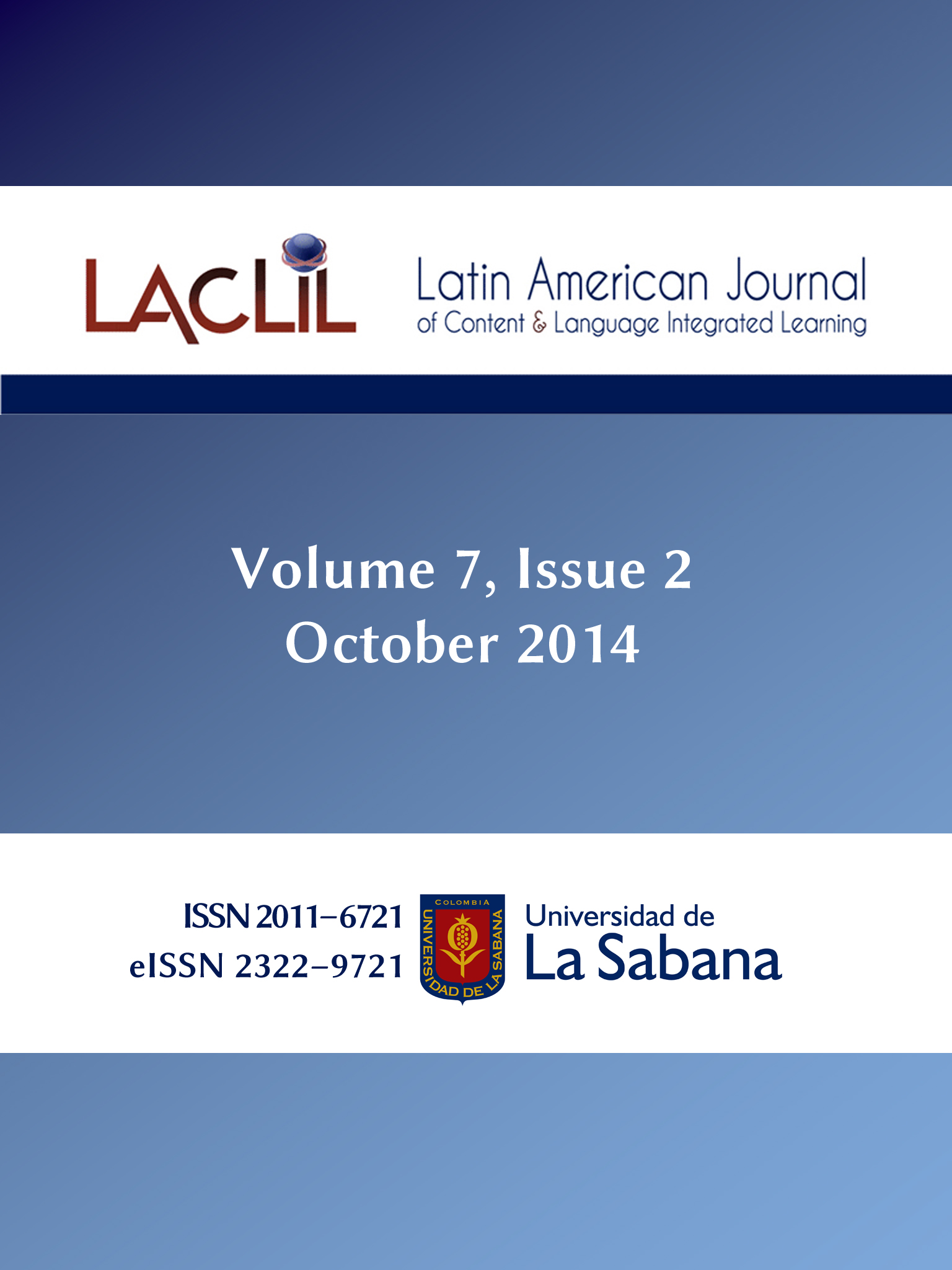Editorial introduction
DOI:
https://doi.org/10.5294/4738Abstract
Welcome to Volume 7, Issue 2 of the Latin American Journal of Content and Language Integrated Learning (LACLIL). This issue offers insights from researchers on areas related to didactic transposition, vocabulary and gender variation, teacher training, CLIL implementation, vocabulary assessment and CLIL with Spanish as a foreign language. Researchers from a variety of contexts —Argentina, and Spain, as well as different parts of the United States—with a variety of leaners (primary, secondary, and tertiary education), share how CLIL has been working in their context. More and more practitioners are increasingly looking at the multiple ways in which CLIL can be implemented in accordance with their contexts, which serves an indicator that CLIL is starting to make a difference in more educational contexts worldwide.Downloads
References
Anderson, C. E. (2011). CLIL for CALP in the multilingual, pluricultural, globalized knowledge society: Experiences and backgrounds to L2 English usage among Latin American L1 Spanish-users. Latin American Journal of Content & Language Integrated Learning, 4(2), 51-66. doi:10.5294/laclil.2011.4.2.5
Coyle, D. (2010). Forward. In D. Lasagabaster & Y. Ruiz De Zarobe (Eds.), CLIL in Spain: Implementation, results and teacher training. Newcastle upon Tyne: Cambridge Scholars Publishing.
Frigols Martín, M. J. (2008). CLIL implementation in Spain: An approach to different models. In C. M. Coonan (Ed.), CLIL e l’apprendimento delle lingue. Le sfide del nuovo ambiente di apprendimento, Venezia, settembre 2008 (pp. 221–232). Venice, Italy: Libreria Editrice Cafoscarina. Retrieved from http://arca.unive.it/bitstream/10278/1013/1/13Frigols.pdf
Pistorio, María Inés. (2009). Teacher training and competences for effective CLIL teaching in Argentina. Latin American Journal of Content & Language Integrated Learning, 2(2), 37-43. doi:10.5294/laclil.2009.2.2.14
Downloads
Published
How to Cite
Issue
Section
License
This Journal and its articles are published under the Creative Commons CC BY 4.0 DEED Attribution 4.0 International license. You are free to: Share — copy and redistribute the material in any medium or format for any purpose, even commercially. Adapt — remix, transform, and build upon the material for any purpose, even commercially. The license cannot revoke these freedoms as long as you follow the terms of the license.








